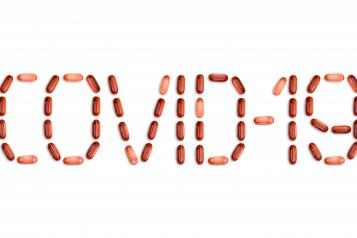New research exploring vaccination confidence provides vital lessons for public health campaigns

It is well documented that there’s lower vaccine confidence to COVID-19 vaccines among some ethnic minority communities living in the UK. This evidence follows a historical trend of lower vaccine uptake in areas with a higher proportion of ethnic minority groups across England.
At the root of the problem are institutional mistrust and misinformation – and that is what the healthcare sector and policymakers need to address.
Addressing mistrust and misinformation about NHS programmes could also help reduce health inequalities in Kent and Medway.
Healthwatch England’s research
To better understand and address vaccine hesitancy, Healthwatch England partnered with Traverse, a social research organisation.
They undertook in-depth conversations and online exercises with 95 participants from African, Bangladeshi, Caribbean and Pakistani backgrounds communities over five weeks during March and April. The people they engaged with have primarily hesitant attitudes or lack confidence in the vaccine.
What they found
They have produced a report which outlines a range of themes emerging from the findings. These can provide important lessons to the COVID-19 vaccine programme and anyone working on future public health campaigns.
Key lessons for public health sector and communications professionals
Attitudes to the vaccine are incredibly personal and we cannot make any broad conclusions about whole communities from our findings. Healthwatch England have drawn out some key themes to support improvement in the way the NHS and other public health professionals communicate with the public.
Allow for agency
Give people agency to decide about the vaccine by providing them with all the information they need. Whilst it is important to stress the reasons behind the necessity for taking a vaccine, it should be framed as an offer that people can take up as soon as they feel comfortable.
Independence of institutions
Ensure your organisational status is clear. Whilst participants generally trusted doctors, scientists and the NHS, they did less when they saw the NHS as a branch of the government. There was general distrust of those who had any possibility of standing to gain commercially from the COVID-19 vaccination roll out.
At least I have a personal relationship with my GP, someone I can speak to one to one. Their aims are obviously our health – different from politicians.
Focus on transparency
Make all information about the vaccine public and accessible. Transparency helps build trust. The participants Healthwatch England engaged with felt that the more transparent a source is, the more trustworthy it is. They admitted they could not possibly synthesise all the information on vaccines, but they want to know all information is readily available for the public.
Localise the approach
Reach out to communities and engage locally and directly.
Setting up online events for local areas with a panel that includes local health workers, scientists and community leaders can be a very powerful way to build trust and answer questions.
The participants had higher levels of trust in people if they have tangible links to the vaccine rollout programme, such as local GPs and frontline workers. Public Health officials, distant religious leaders, celebrities and politicians did not render the same levels of trust.
Targeted messaging to communities via someone they have little tangible connection to can have the counter-effect to what was intended.
It very much reflects the white gaze (throw a bunch of BAME people together as tough they are not from separate and heterogenous communities, appeal to racial stereotypes (eg. Indian doctor), push the desired narrative with a script of facts and debunking rather than encouraging dialog. It felt like the way the NHS tries to appeal to us, there’s no effort to actually understand and address the reasons for our reluctance, refusal and thus come across as patronising, inauthentic … speaking to us rather than as us.
Address ambiguity
Give people the information they need to make decisions they feel comfortable with.
The individuals had many unanswered questions about the need to get vaccinated, technical questions regarding the making and roll-out of the vaccine, and if there were any potential long-term impacts of the vaccine and its suitability for specific religions/ethnicities.
For example, when participants were asked to watch an official Public Health England video, they thought that it didn’t recognise ambiguities around potential long-term impacts, which they felt could raise suspicion despite the video’s intended positivity towards the vaccine.
Top tips: tone and format
When creating COVID-19 vaccine communications for people from ethnic minority groups who are hesitant or lack confidence, the following findings can act as top tips in relation to tone and format:
- It’s fundamental for any communications directed at Black and Asian people to recognise that they are not one homogenous group.
- Acknowledge that some ambiguity exists relating to the potential long-term impacts of the COVID-19 vaccine.
- Recognise the legitimacy in some level of scepticism based on deep-rooted mistrust in institution experienced by Black and Asian people.
- Create content that has a conversational format providing as much information as possible. Avoid overly simplistic approaches to communication.
- Ensure messages are practical and accessible.
- Ensure that tone of voice speaks to the audience as opposed to at them. Don’t share strong directional messages without providing more context.


